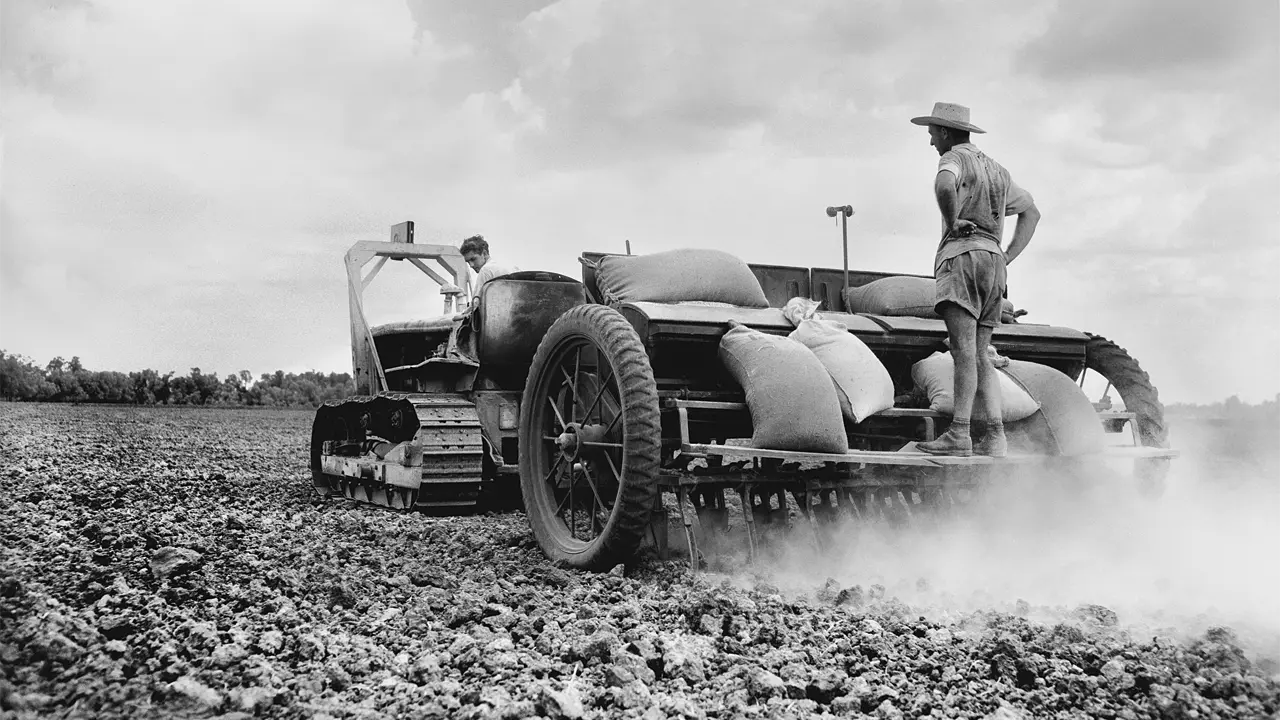A 1950s American venture to farm rice south of Darwin was ultimately a failure, but the rural hamlet of Humpty Doo still sees some benefits from the grand plan.
Story Kerry Sharp Photo National Archives of Australia
Adelaide River floodplains have long been a magnet for worldwide visitors because of their vast and diverse waterbird flocks, reptiles and other enticing attributes, but back in the 1950s, this globally recognised ecological haven in the Top End was attracting high-powered foreign attention for a dramatically different reason – the growing of wetlands rice.
Following his epic 1862 overland expedition to the Top End and Timor Sea, explorer John McDouall Stuart reported to the government that he’d discovered a region with the potential to become “the finest colony under the Crown – capable of growing any- and every-thing”. This buoyant feedback might well have been front of mind when, 90 years later at a lavish Hollywood party, wealthy American entrepreneur Allen Chase sat down with a future Australian Prime Minister to talk about investment opportunities on our island continent.
Australia’s then Labour and National Service Minister Harold Holt was on a US mission to sell his government’s vision for vast tracts of the north to be used for large-scale cropping – and specifically for rice that could be shipped to populous Asian nations and help meet the culinary demand of a mass influx of Chinese miners during the 1880s Pine Creek gold rush. Most critically, the government saw agricultural investment as the path to building a sustainable population and industry base in the isolated north.
Government records confirm that in the wake of his 1953 Hollywood meeting, Chase flew to Australia to personally inspect the Adelaide River, cast his eyes over the vast floodplains and described what he saw as being “exactly like the Nile Valley, but twice as good!”
This story excerpt is from Issue #153
Outback Magazine: Feb/Mar 2024










